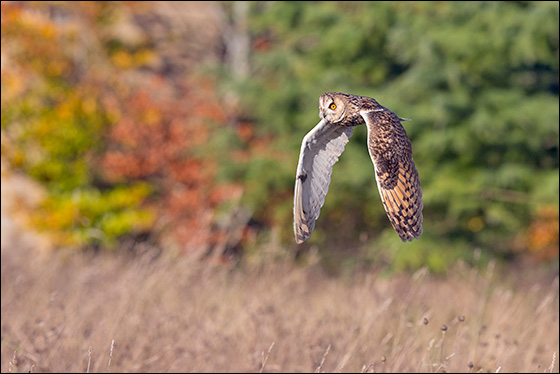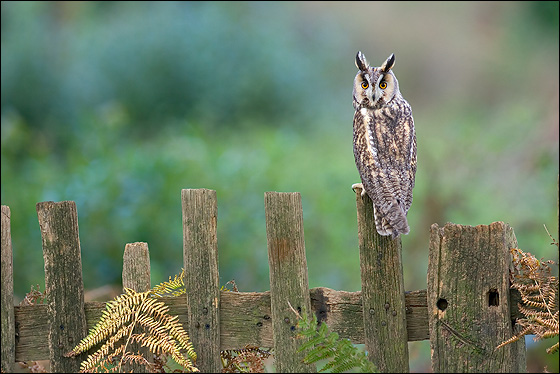Long-eared Owl (Asio otus)
briefly above it before a pounce led by the talons. This checking is done almost entirely by ear; the Long-eared Owl is capable of locating prey in complete darkness this way and, in contrast to the Short-eared Owl, it only hunts during the night. The rustle of wind tends to reduce its effectiveness, as well as making prey more difficult to catch, so under these conditions it might have to resort to more sedentary techniques.
With a wider distribution in Europe than any other owl, the Long-eared is an adaptable species. Its requirements for breeding are simple enough, just somewhere with some thick tree cover adjacent to open ground. The nature of the woodland is not important, with both pure deciduous and pure coniferous stands utilised, but there must be old Crow or Magpie nests available for second hand use. Many Long-eared Owls live in small copses and shelterbelts where, despite being quite large birds, they are easily overlooked.
A good many Long-eared Owls, especially the Scandinavian birds evacuate their breeding areas in the winter and may travel some distance, occasionally as far as Egypt in the east. They are more sensitive than forest owls to snow cover, and the males, without the need to defend scarce tree-holes for a nest site, are under less compulsion than many other species to stay the harsh conditions. The birds often migrate in small groups, and, upon arrival, may be drawn to the same rodent-rich wintering areas, and if this happens the birds gather by day to sleep in thick bushes, each bird just a few metres apart. A good roost site like this is essential for survival, and many are traditional, with years of use behind them.In common with most owlets, young Long-eared Owls usually leave the nest itself before they are able to fly – in this case, nearly two weeks before. This stage of development is known as “branching”, and it is probably an adaptation to reduce predation. The youngsters spread out and roost some distance from their siblings, meaning that if one is discovered and killed by a marten, for example, the rest of the brood will not necessarily be slain along with it.


